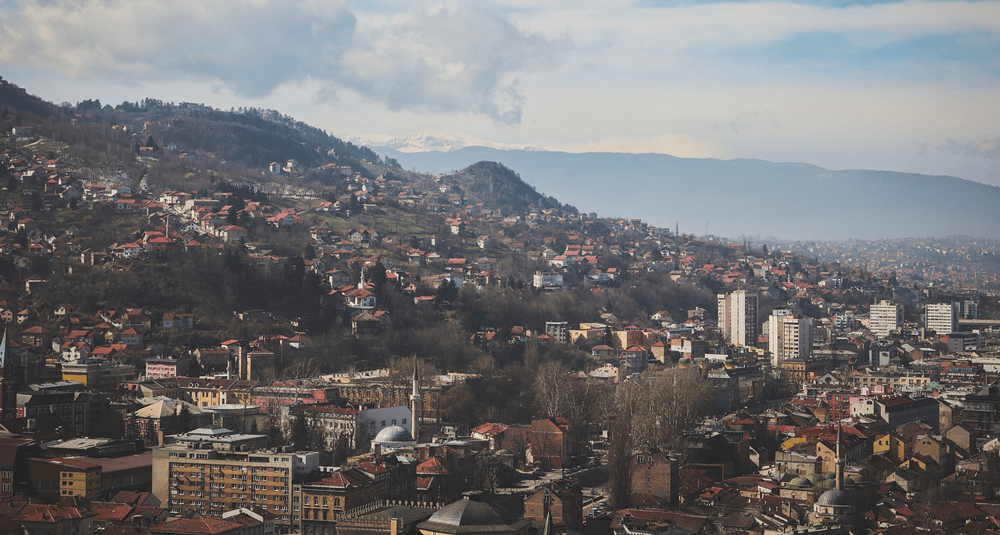What is the capital of Bosnia and Herzegovina?
Last Updated:
The capital of Bosnia-Herzegovina is Sarajevo, a city rich in history and culture, located in the heart of the Balkans. Known for its cultural and religious diversity, Sarajevo has been a meeting point between East and West for centuries. It is often referred to as the Jerusalem of Europe, thanks to the peaceful coexistence of different religious communities.
Sarajevo was founded in the 15th century by the Ottoman Empire. The city grew rapidly to become the administrative, commercial and cultural center of the region. The Ottomans built many important buildings, including mosques, covered markets and hammams.
In 1878, Bosnia-Herzegovina came under the control of the Austro-Hungarian Empire. This period saw the introduction of European architecture, with Baroque, neo-Renaissance and Art Nouveau buildings contrasting with existing Ottoman structures.
Sarajevo is infamous for the assassination of Archduke Franz Ferdinand of Austria in 1914, an event that sparked off the First World War. During the Bosnian War in the 1990s, the city underwent a devastating siege, the longest in modern history, which profoundly affected its inhabitants and infrastructure.
Sarajevo’s old Ottoman quarter, Bascarsija, is the historic heart of the city. It is home to bazaars, traditional cafés and monuments such as the Gazi Husrev-beg mosque, one of the city’s largest and oldest.
This historic bridge is famous for having been the site of the assassination of Archduke Franz Ferdinand. The nearby Latin Bridge Museum features exhibitions on this crucial event.
This neo-Gothic building is an example of the Austro-Hungarian influence on the city’s architecture. It is one of Sarajevo’s main Catholic places of worship.
Sarajevo is unique in that mosques, Orthodox churches, Catholic churches and synagogues are located in close proximity to one another. This diversity reflects the city’s multicultural history.
Established in 1995, this festival has become one of the most important film events in Southeast Europe. It attracts filmmakers and cinephiles from all over the world.
Sarajevo’s cuisine is a blend of Ottoman, Austro-Hungarian and Mediterranean flavors. Traditional dishes include cevapi, burek and baklava.
After the Bosnian war, Sarajevo embarked on a process of reconstruction and reconciliation. Although the scars of the siege are still visible, the city has made significant progress in restoring its infrastructure and cultural heritage.
Tourism plays a growing role in Sarajevo’s economy. Visitors are attracted by its rich history, vibrant culture and warm hospitality. The city offers a unique experience with its historic monuments, festivals and picturesque landscapes.
As the capital, Sarajevo is the seat of government of Bosnia-Herzegovina. It is home to numerous national and international institutions, as well as businesses and non-governmental organizations.
Sarajevo is an important center for regional cooperation in the Balkans. The city regularly hosts conferences and summits on political, economic and cultural issues.
Sarajevo is the capital of Bosnia-Herzegovina, a city marked by a rich and complex history. From its Ottoman origins and Austro-Hungarian influence to the defining events of the 20th century, Sarajevo is a symbol of resilience and cultural diversity. Today, the city continues to rebuild and prosper, attracting visitors from all over the world thanks to its unique charm and historic heritage.
You may also be interested in
geography

What is the capital of Bosnia and Herzegovina?
Answer
The capital of Bosnia-Herzegovina is Sarajevo. This historic city is known for its cultural diversity and its role in many important historical events.